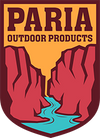At the end of a long day of hiking, it is always great to put your feet up and enjoy your dinner around a campfire after setting up camp. However, finding that perfect campsite can be a task if you do not know what to do. Allow us to help you pick out that perfect campsite that can make the difference between a wonderful adventure and an epic fail.
When picking out a campsite, you have two options. The first would be an already Established Site. These are usually marked areas that have been assigned by park management as campgrounds. Some will have amenities like tent pads and fire pits. There may even be food storage boxes. Depending on the season and the park’s policies, you may have to call in advance to make reservations so that you can use a specific site. Some of these established campsites may just be clearings that are marked.
All in all, the established sites are allocated for use because they have been proven safe and will cause the least amount of damage to the environment. There are some parks that will only allow camping in these established campsites.
Your next option, if allowed, would be Stealth Camping. This is when you pick the site where you set up camp on your own. In this case, it would be best to follow some of the following guidelines to select a site without causing harm both to yourself and the environment:
- Find a relatively flat area that is at least 20 feet away from any water source. This will ensure that the waters will not be contaminated.
- Make sure that the area is dry and has good drainage. Check if there are low spots that could collect water during rain. Waking up in a puddle would certainly put a literal damper in your adventure.
- If possible, look for shaded areas. Camping under a tree could mean more shade from the sun. However, it can be really nice to wake up to sunshine on your tent, especially during colder weather. As a result, locating your tent where it will receive early morning sun can be a nice choice.
- If allowed and only if absolutely necessary, pick a place where you can start a campfire. Make sure it can accommodate a makeshift fire pit, it is relatively far from trees and dry shrubs, and never leave the fire unattended. Always put the fire out before sleeping.
As far as things to avoid when picking out sites, these are our suggestions:
- Avoid areas that may be prone to floodings like gullies or gorges. These areas might accumulate water quickly during rains and could even have flash floods if the downpour gets too heavy too fast.
- Ridges and hilltops especially in the rainy season. Heavy rains might loosen the soil and cause landslides.
- Lone trees in open fields to avoid being struck down by lightning.
- Places with fragile or loose soil/rocks, or fragile vegetation. Not only will it be safer to avoid these but it will also minimize any possible damage to the ecosystem.
- Just to emphasize the point, avoid areas within 20 feet from any water source to avoid contamination.
It would be best to do a little research on the areas where camping is allowed in the parks before starting your trek. Typically, the Visitor Centers or official websites usually provide information and maps which will tell you where camping is allowed or suggested, and what you are allowed to do there. Information will always be your best tool. Finally, always remember the “Leave No Trace” principles which will also guide you in picking out the best place to set up camp.
Do you have any suggestions when choosing campsites? Leave a comment below and also check out the rest of our blog for a wealth of resources.












Leave a comment